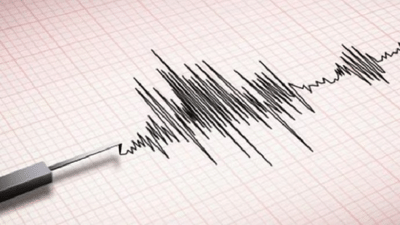
Residents in Karachi city of Pakistan’s Sindh province continue to remain anxious as they struggle to recover from the trauma of about 60 moderate to low-intensity tremors recorded in June.
Karachi Mayor Murtaza Wahab said there was still unease among residents who feared an earthquake would destroy their lives after frequent tremors struck between June 2 and 22.
The Pakistan Meteorological Department has confirmed that the majority, 33, of the low-intensity tremors were recorded in areas close to Malir.Other areas where tremors were felt included Quaidabad, Landhi, Gadap, DHA City and DHA Karachi and Korangi. At least 10 tremors struck on June 2, followed by a dozen the next day.
The last six tremors – four of them above 3 magnitude – were recorded on June 22.
Zaheer ul Hasan, who works in a garments factory in Landhi, recalled the 3.6 intensity tremor on June 2 and said: “We know how we felt. We could feel the ground moving, and we expected the worst, but after a few seconds, the tremors subsided. But when so many tremors, even of low intensity, take place in your neighbourhood, obviously you become stressed and concerned.”
Faizan Qadri, who lives in Landhi, is convinced to have felt at least 40 tremors between June 2 and 22.
“This regular frequency of the tremors did affect the mental health of many residents,” he said.
Though the seismic activity appears to have settled down since June 22, Nighat Khan, a resident of Malir, said: “Every time there was a tremor, day or night, we rushed out of our homes with our families and prayed for help.”
No casualties were reported following these low-intensity earthquakes, but the psychological damage to the residents was evident in the affected areas.
Chief Meteorologist Ameer Hyder Leghari and Marine Geologist Asif Inam, however, played down the chances of a major earthquake hitting Karachi, Pakistan’s biggest city and financial hub, as the low-intensity tremors helped release the pressure built up in the fault lines.
Leghari and Inam admitted it was unusual for low-intensity quakes to occur for such a long period, noting the coastal city of Karachi was close to several active and dormant fault lines, and the recent seismic events were consistent with the region’s natural tectonic movements.
They said the concerned authorities needed to strictly implement building codes, review old buildings in Karachi, and stop unauthorised groundwater extraction.
Shahbaz Laghari, CEO of the private Earthquake News and Research Centre, was, however, unconvinced Karachi was safe from a high-intensity earthquake. “I will repeat that when a series of low-intensity tremors occur this often, it means a major earthquake can be coming,” he said.
He noted that the rapid and unplanned manner in which Karachi had grown was unhealthy, and even an earthquake of moderate intensity around 4.5 or 5.5 magnitude could wreak havoc in densely populated areas.
Inam also stressed the need for a comprehensive coastal zone management plan for Karachi to protect strategic infrastructure from the impacts of climate change and related coastal hazards.
“It is essential to continuously monitor changes using modern geodetic techniques, such as InSAR [Interferometric Synthetic Aperture Radar] and GPS [Global Positioning System] measurements, to detect even minor changes in ground elevation that could affect infrastructure or increase flood risk,” he said.
“The seismic activity has settled down to an extent, indicating increasing stability of the reactivated fault line, which had let out pressure,” he added.
In the past, there have been at least two occasions when people living in coastal areas began moving to the city in panic when the met office warned of a risk of a Tsunami hitting the coastal belt of Karachi.
According to Laghari, Tsunami-generating earthquakes in the region have been reported as early as 1881.
Leghari also said there was no evidence to link the recent 5.5-magnitude quake in Balochistan’s Musakhel with Karachi’s seismic events.
“There is no evidence to suggest this since Karachi’s seismic activity is considered localised,” he added.